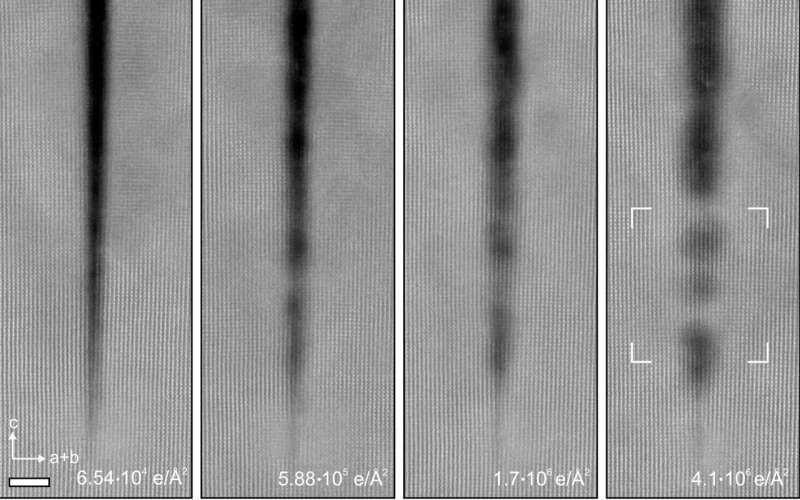This article has been reviewed according to Science X's editorial process and policies. Editors have highlighted the following attributes while ensuring the content's credibility:
fact-checked
peer-reviewed publication
trusted source
proofread
Surprising discovery shows electron beam radiation can repair nanostructures

In a surprising new study, researchers at the University of Minnesota Twin Cities have found that the electron beam radiation that they previously thought degraded crystals can actually repair cracks in these nanostructures.
The groundbreaking discovery provides a new pathway to create more perfect crystal nanostructures, a process that is critical to improving the efficiency and cost-effectiveness of materials that are used in virtually all electronic devices we use every day.
"For a long time, researchers studying nanostructures were thinking that when we put the crystals under electron beam radiation to study them that they would degrade," said Andre Mkhoyan, a University of Minnesota chemical engineering and materials science professor and lead researcher in the study. "What we showed in this study is that when we took a crystal of titanium dioxide and irradiate it with an electron beam, the naturally occurring narrow cracks actually filled in and healed themselves."
The researchers accidentally stumbled upon the discovery when using the University of Minnesota's state-of-the-art electron microscope to study the crystals for a completely different reason.
"I was studying the cracks in the crystals under the electron microscope and these cracks kept filling in," said Silu Guo, a University of Minnesota chemical engineering and materials science Ph.D. student. "This was unexpected, and our team realized that maybe there was something even bigger that we should be studying."
In the self-healing process, several atoms of the crystal moved together in tandem and met in the middle and formed a sort of bridge that filled the crack. For the first time, the researchers showed that the electron beams could be used constructively to engineer novel nanostructures atom-by-atom.
"Whether it's atomically sharp cracks or other types of defects in a crystal, I believe it's inherent in the materials we've grown, but it's truly astonishing to see how Professor Mkhoyan's group can mend these cracks using an electron beam," said University of Minnesota Chemical Engineering and Materials Science Professor Bharat Jalan, a collaborator on the research.
The researchers say the next step is to introduce new factors like changing the electron beam conditions or changing the temperature of crystal to find a way to improve or speed up the process.
"First we discovered, now we want to find more ways to engineer the process," Mkhoyan said.
In addition to Mkhoyan, Guo, and Jalan, the research team included University of Minnesota Chemical Engineering and Materials Science Ph.D. student Sreejith Nair, and former graduate student Hwanhui Yun.
The research, "Mending cracks atom-by-atom in rutile TiO2 with electron beam radiolysis," is published in the journal Nature Communications.
More information: Silu Guo et al, Mending cracks atom-by-atom in rutile TiO2 with electron beam radiolysis, Nature Communications (2023). DOI: 10.1038/s41467-023-41781-x
Journal information: Nature Communications
Provided by University of Minnesota





















